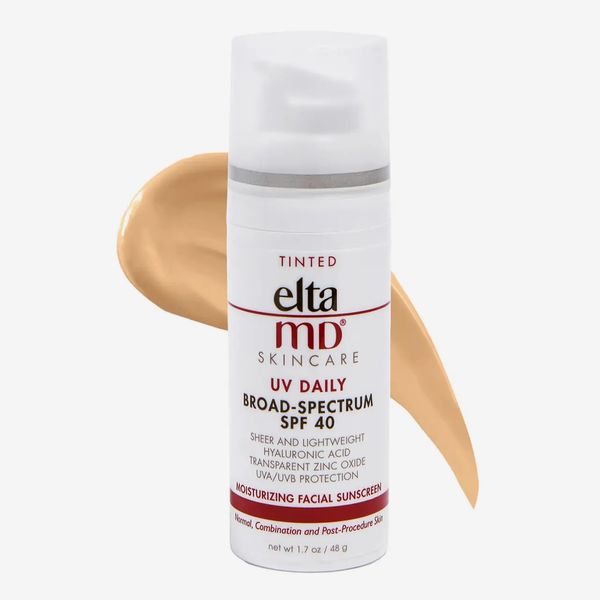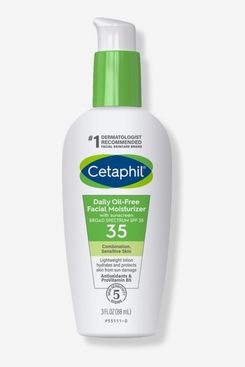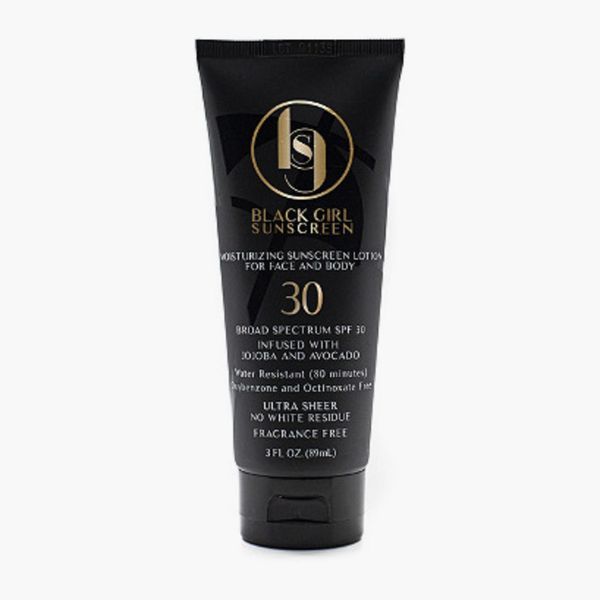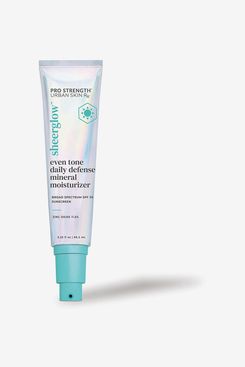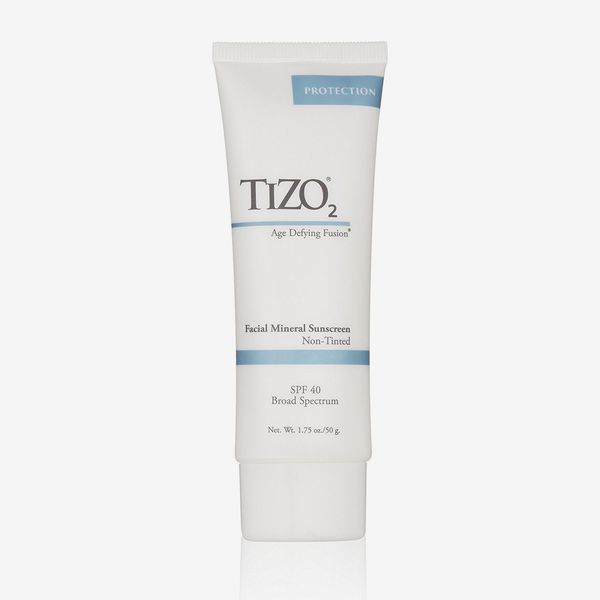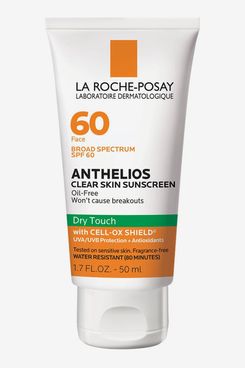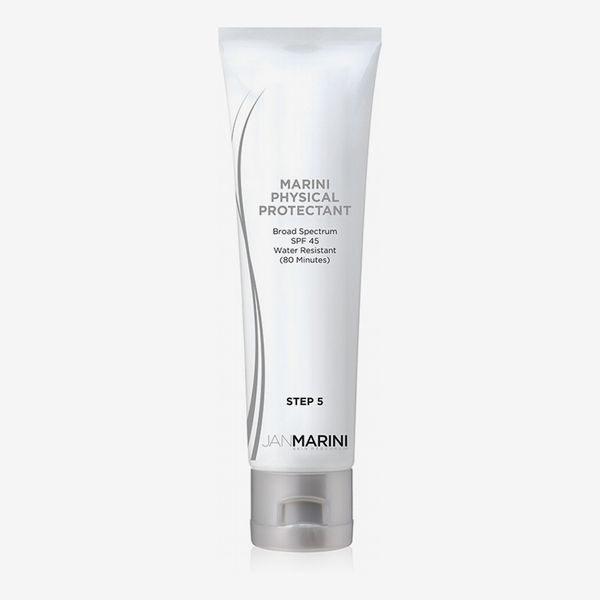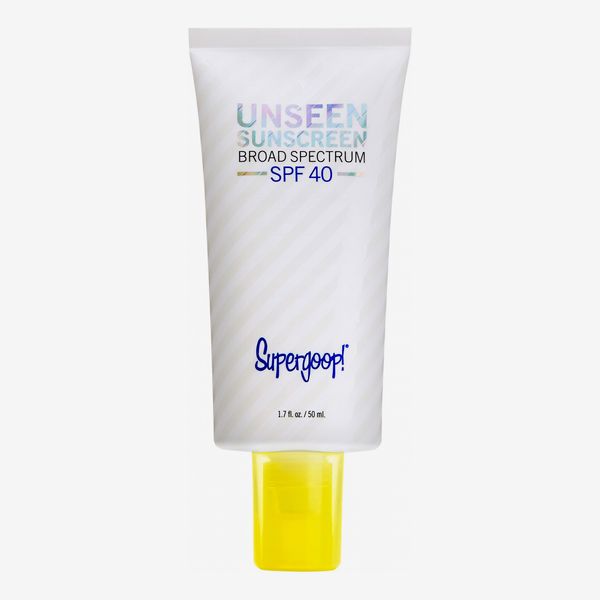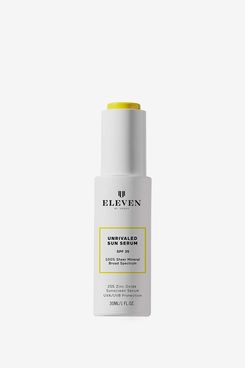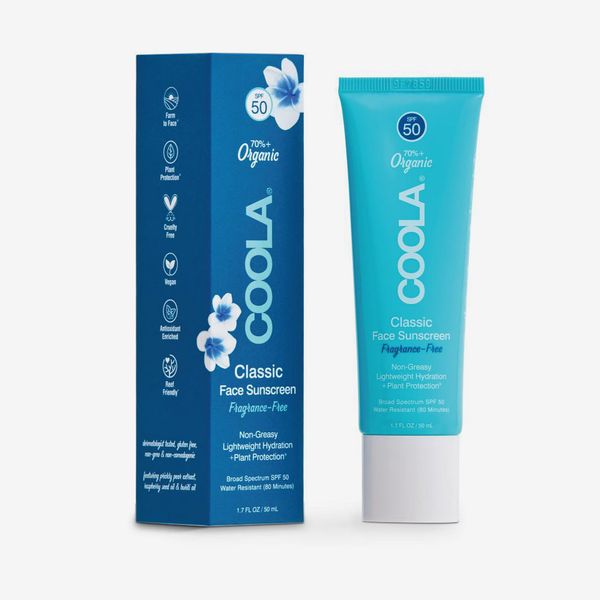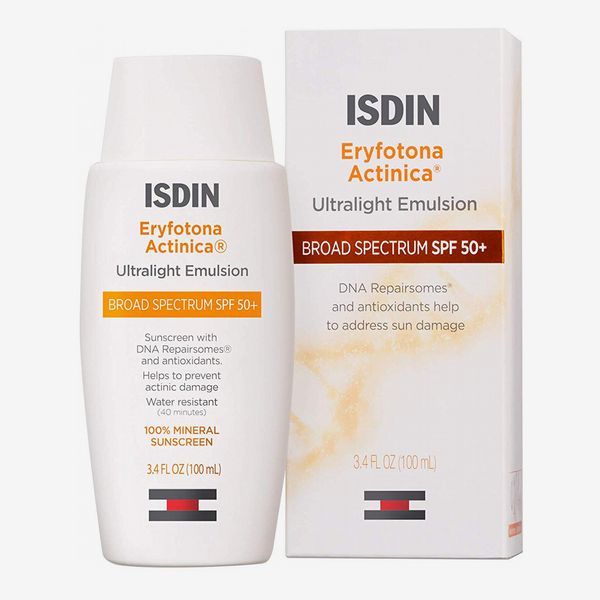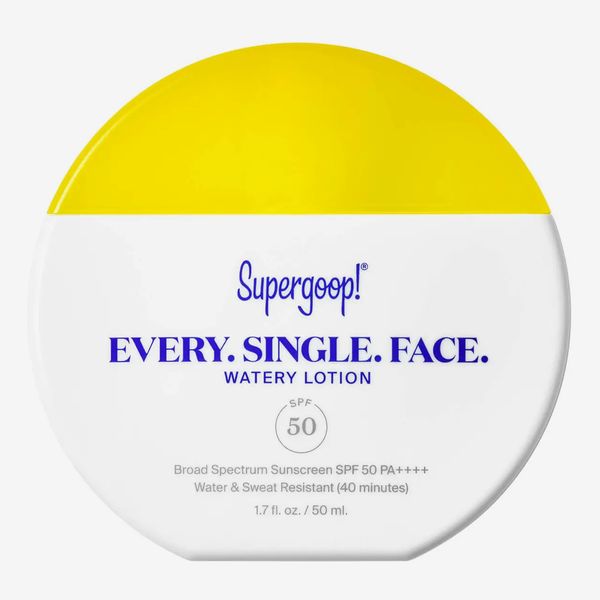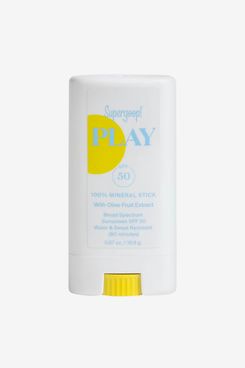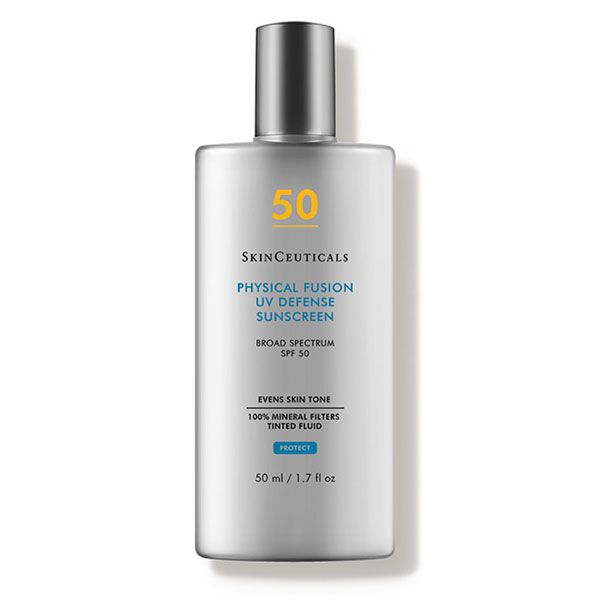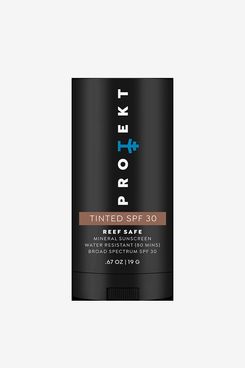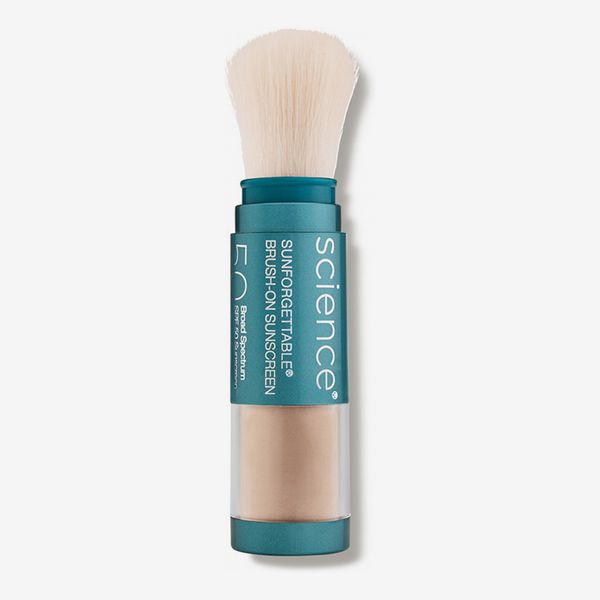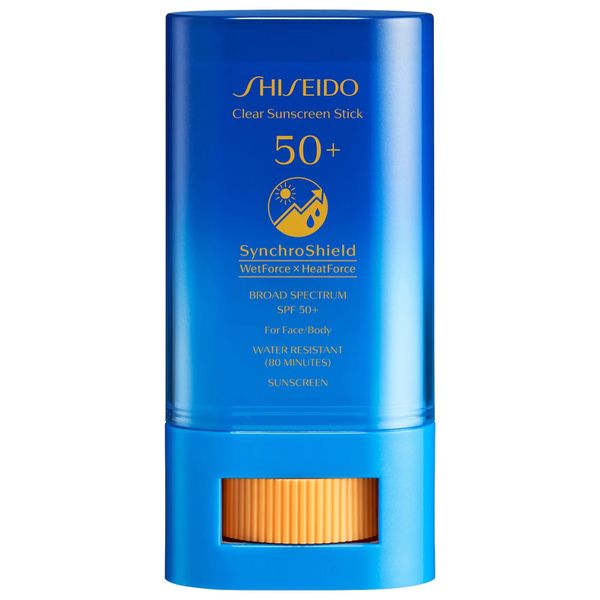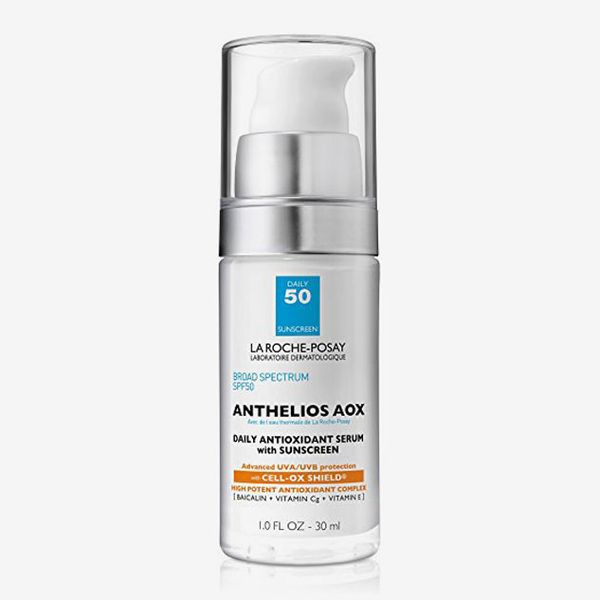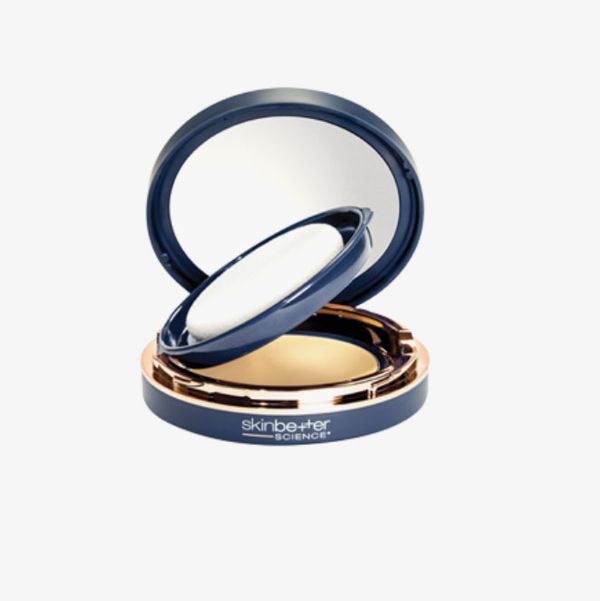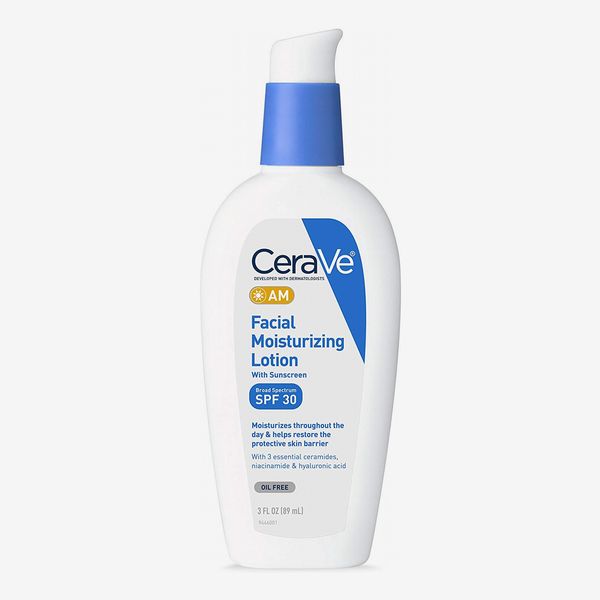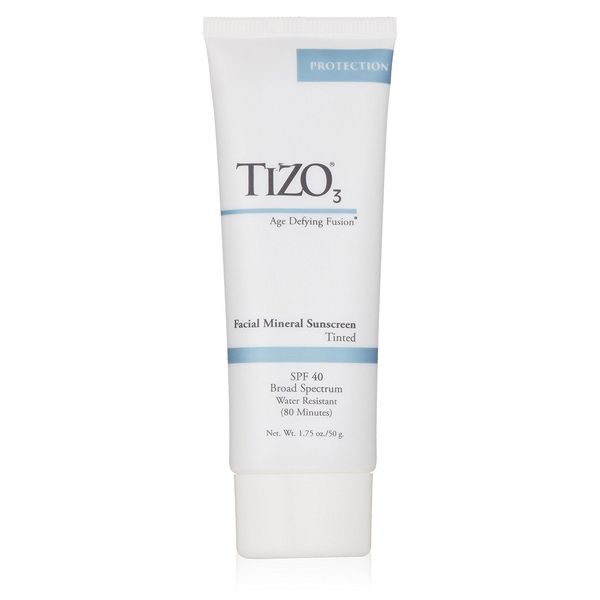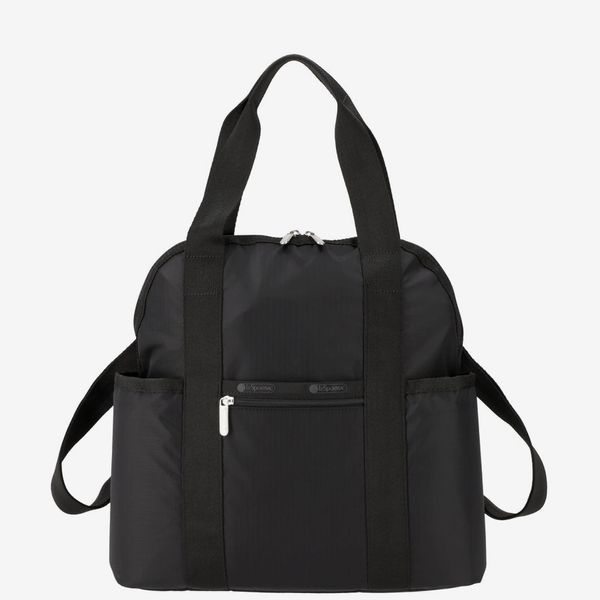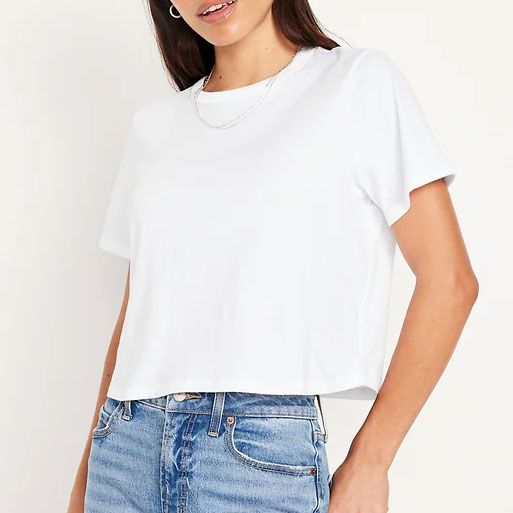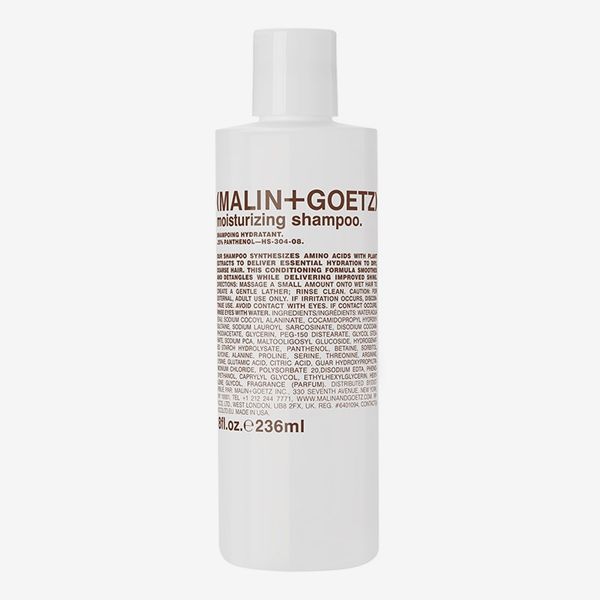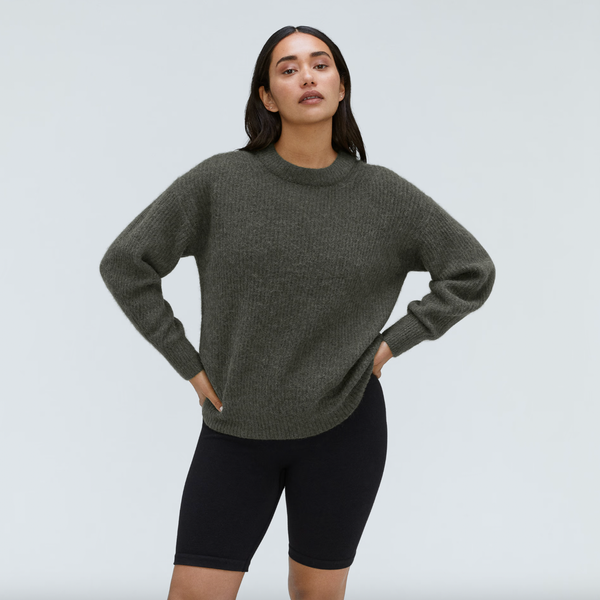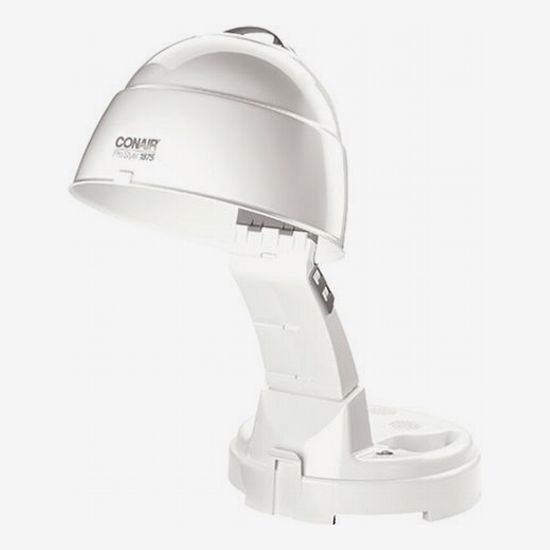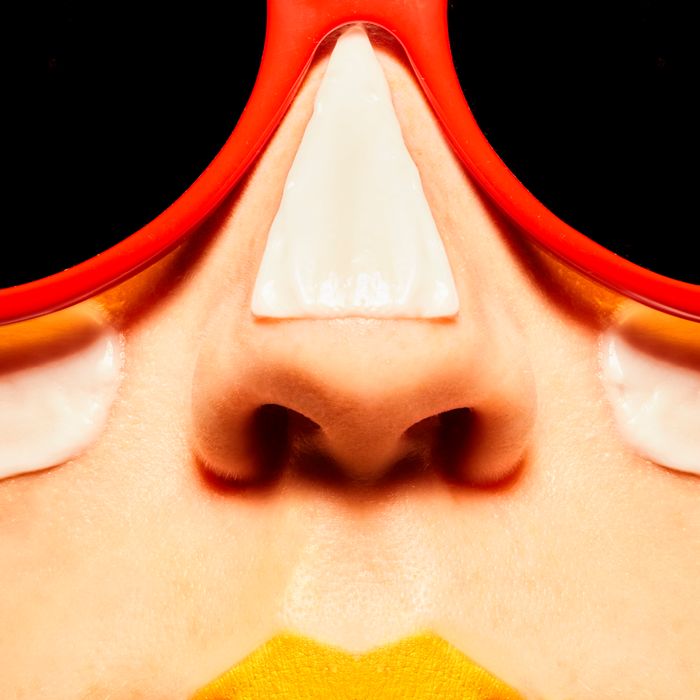
In this article
After years of beauty reporting and countless conversations with dermatologists and estheticians, I’ve learned that sunscreen is a nonnegotiable, year-round thing. It’s a daily must-do, right up there with washing your face. Nearly every skin concern can be exasperated by not wearing SPF. It helps with everything from hyperpigmentation to fine lines to acne, and protects skin from sun damage, which can lead to a host of other problems. Dr. Jennifer Stein, a dermatologist at NYU Langone Health, says everyone should generally look for sunscreens with broad-spectrum coverage (which protects against UVB rays that cause burning and UVA rays that cause lasting damage) and an SPF of 30 or higher, and she notes that a high SPF doesn’t mean you can go hours without reapplying. You should always reapply sunscreen after every two hours in the sun, Stein says, even if you don’t burn easily.
This can be tricky, though, especially if you’re prone to breakouts or have sensitive skin. To find the best facial sunscreens, I’m testing out several different formulas over the next few months. You’ll find results from those hands-on trials below. I also asked Stein and 11 more dermatologists and skin-care professionals to weigh in on sunscreens for different skin types and activities. (Their recommendations inform which formulas I test.) And remember: These sunscreens should be used in addition to hats and protective clothing, and wearing any of them doesn’t excuse you from spending time in the shade, since no sunscreen can completely prevent sun damage.)
What we’re looking for
SPF level
SPF—or sun protection factor—is the measure of how much UV radiation is required to cause a sunburn. The higher the SPF, the less likely you are to burn. It’s important to note that SPF doesn’t relate to time spent in the sun but rather references the amount of solar energy, so reapplication depends on the intensity of the sun. To put it simply: You need to reapply more often during the middle of the day, when the sun is at its peak, than, say, 9 a.m., when the sun is less intense. As we mentioned before, a high SPF doesn’t mean you can stop reapplying. Instead consider what your skin might need. Fairer skin needs a higher SPF to protect the skin, while darker skin tones (which have a built-in SPF of around 13.4) can use a lower SPF (think SPF 30) and still be protected. Another note: SPF only refers to UVB rays, but it’s best to look for a broad-spectrum sunblock, which will protect skin from both UVA and UVB rays.
Chemical or mineral
There are two types of sunscreen filters: chemical and mineral. Chemical sunscreens use organic materials like oxybenzone, avobenzone, homosalate, octinoxate, octocrylene, and octisalate to offer sun protection. These work by absorbing the sun’s rays, turning it into heat, then releasing said heat through skin. This process takes about 15 minutes, so if you’re using chemical sunscreen filters, then you should be giving yourself at least that much time before heading outdoors. Because of their properties, chemical filters tend to be more cosmetically elegant and can be formulated into lightweight moisturizers and oils. There are a few drawbacks with chemical sunscreens. The first: They need to be applied more often than mineral sunscreens because they’re not photostable and break down upon exposure to UV light. Second, there have been studies suggesting that chemical sunscreen ingredients like oxybenzone and octinoxate can seep into water while you swim and bleach coral reefs. Some chemicals have been linked to endocrine disruption, although the data isn’t conclusive. Chemical sunscreens tend to be more irritating, as allergies to the active ingredients are more common.
Mineral sunscreens act as a physical barrier between you and UV rays, scattering the light when it hits your skin. There are two main ingredients that act as physical blockers — titanium and zinc oxide. These block a wide range of UV wavelengths and are photostable, meaning you don’t have to reapply as frequently (though you should still stick to the two-hour rule). Titanium and zinc oxide are well tolerated by all skin types, including sensitive, and less likely to cause a reaction. The zinc oxide is a key component in preventing hyperpigmentation, so it’s often recommended by dermatologists for patients with melasma or dark marks. In contrast to chemical sunscreens, physical filters aren’t as smooth or lightweight. They tend to leave a white cast on skin, which makes it challenging for deeper skin tones. Mineral formulas have come a long way thanks to zinc nanoparticles, which rub in more easily.
To get the benefits of both, you can opt for a hybrid formula, which contains chemical and mineral filters.
Contains oxybenzone, homosalate, and octisalate
The CDC has been keeping an eye on oxybenzone for a few years now. The popular chemical has been shown to absorb through the skin, and there have been concerns that it’s an endocrine disruptor, after a few studies showed lower levels of testosterone in teenage boys and an increased risk of endometriosis in women. Currently the European Commission (which is known for having stricter regulations on cosmetics and skin care than the U.S.) caps the oxybenzone concentration at 6 percent, though all sunscreens don’t note the concentrations on the label, so it’s difficult to be sure. Homosalate and octisalate have been identified as possible endocrine disruptors, but there have been less findings on these ingredients and their effects. If this concerns you, it’s definitely something to keep in mind; however, these ingredients (and other chemical sunscreen ingredients) haven’t at present been deemed unsafe for use.
Consistency
Consistency is important when it comes to sunscreen, because thickness can impact the way it sits on your skin. Someone looking for a formula that won’t feel heavy or greasy might opt for a lightweight formula, while someone with dry skin might want a thicker, more nourishing sunscreen.
Best sunscreen overall
SPF level: SPF 46 | Chemical or mineral: Hybrid | Consistency: Lightweight lotion
After many years of the EltaMD UV Clear reigning supreme, it has been dethroned by the brand’s tinted formula (not a major departure, I know). The tinted version has the same ingredients as the beloved clear but with some additional pigment, which makes it a better option for deeper skin (though if you have very deep skin, I would recommend patch-testing before slathering it all over). I like that it has a silky, lightweight feel and disappears after rubbing it in for a few moments. And once on, my skin feels a bit more hydrated, complementing my moisturizer. I’m also a fan of the ingredients list. The EltaMD utilizes both chemical and physical SPF, so you get the silky feel that’s often associated with chemical SPF along with the physical SPF, which, in addition to blocking a wide range of UV rays, also helps with hyperpigmentation. It also contains additional antioxidants and niacinamide, a vitamin-B3 derivate with anti-inflammatory properties that can help with breakouts. Beyond being my best-overall pick, it’s also a hit with dermatologists. Dr. Marnie Nussbaum likes it so much she wears it every day. Dr. Patricia Wexler of Wexler Dermatology says her patients love it because it doesn’t feel greasy like traditional sunscreen. In addition to being fragrance-free and noncomedogenic, EltaMD’s sunscreen is especially effective because it’s rich in antioxidants that help protect against skin-damaging free radicals, Wexler says. Dr. Jennifer MacGregor of Union Square Laser Dermatology appreciates that it’s “lightweight and oil-free, so it won’t clog pores,” and Dr. Dendy Engelman of Shafer Clinic Fifth Avenue points out that the formula contains “lactic acid, which will gently exfoliate the skin and regulate sebum buildup,” keeping breakouts at bay. It should be noted, though, that because of the octinoxate, this one isn’t reef-safe, so while it might be great as an everyday option, I would switch to something reef friendly if you’re swimming in the ocean.
Best less expensive sunscreen
SPF level: SPF 35 | Chemical or mineral: Chemical | Contains oxybenzone, homosalate, and octisalate: Homosalate 9.5% and Octisalate 4.8% | Consistency: Lightweight lotion
If your skin-care routine is already packed with AHAs, BHAs, retinoids, and the like, it’s good to pick a sunscreen that simply moisturizes and protects. This lightweight sunscreen from Cetaphil fits the bill. It has a moisturizing, lotion-y consistency and contains antioxidants like vitamin B and E, which help to further protect skin from UV damage. I’m a longtime fan of Cetaphil. It’s the first cleanser I swore by, and I still reach for it if my skin needs a back-to-basics reset or I’m stranded somewhere without my normal stash. All of the brand’s products are thoughtfully formulated with sensitive skin in mind, so for someone like me with a fairly normal skin type, it works well. It’s also half the price of our best-overall pick and widely available, ideal if you need to grab something on the go or don’t want to spend lots of money on a product you’ll use every day.
Best chemical sunscreen for darker skin tones
SPF level: SPF 30 | Chemical or mineral: Chemical | Contains oxybenzone, homosalate, and octisalate: Avobenzone 3%, homosalate 10%, octisalate 5% and octocrylene 2.75% | Consistency: Lotion
Even though I love the EltaMD, nothing beats Black Girl Sunscreen for daily use. It has a thick, lotionlike texture and imparts a glowy sheen that rivals my Victoria Beckham x Augustinus Bader moisturizer. Although it works well for me, it can be a bit heavy for oily skin types (the brand does make a mattifying formula), which is why I recommend it for normal-to-dry skin. Once applied, it dries down completely clear and is really moisturizing thanks to ingredients like avocado, jojoba, and sunflower oils along with carrot juice, which contains vitamin C to help brighten the complexion.
Best mineral sunscreen for darker skin tones
SPF level: SPF 30 | Chemical or mineral: Mineral | Consistency: Lotion
On the mineral front, I’ve had good results with this sunscreen from Urban Skin Rx, which is one of the few mineral sunscreens that doesn’t turn up white or purplish on my skin. To minimize cast, it uses finely milled zinc oxide (but it isn’t nano-size, a concern for those who don’t want their sunscreen to penetrate the skin), which blends clear. The formula does go on white at first, but if you work it in thoroughly, it leaves skin with a noticeable glow. I like that you can use the proper amount and still get glowy results. (With previous mineral options, I would use so little — to avoid a white cast — that it was as if I had barely put anything on.) In addition to being protective, it’s moisturizing, though I wouldn’t skip my moisturizer and apply this on its own. It contains safflower oil, which has a similar lightweight texture to sunflower oil, and is considered one of those rare oils that isn’t irritating to acne-prone skin. Still, if you’re concerned about using oils, this is something to keep in mind. Additionally, it has vitamin C by way of grapefruit extract (for additional brightening) and bisabolol (known to calm and soothe skin).
Best mineral sunscreen for acne-prone skin
SPF level: SPF 40 | Chemical or mineral: Mineral | Consistency: Liquid
For acne sufferers, chemical sunscreens might not be the move. The active ingredients can be irritating for some, so a mineral sunscreen is likely your best bet. You’ll also want to look for a light liquid formula, which Stein recommends. “Liquid is just not as thick, so it’s less likely to clog your pores,” she says. Tizo, which we’ve written about before, ticks both boxes. Dr. Nava Greenfield of the Schweiger Dermatology Group is a fan of the formula because it’s “really gentle on acne” and has a silky-smooth feel that will work for oily skin. I like that it contains active ingredients like vitamins E and C, which help with brightening skin and lightening hyperpigmentation over time. Acne and hyperpigmentation often go hand in hand, so the added actives will address old dark marks while also making sure you don’t get any new ones. It also comes in a tinted formula, a good option for anyone concerned about it leaving a white cast.
Best chemical sunscreen for acne-prone skin
SPF level: SPF 60 | Chemical or mineral: Chemical | Contains oxybenzone, homosalate, and octisalate: Homosalate 15% and octisalate 5% | Consistency: Lightweight lotion
While Tizo uses physical sunscreens like zinc oxide to block the sun’s rays, another option is a chemical sunscreen that absorbs the rays instead. Mineral sunscreen may sound ideal for acne-prone skin, but it’s not as good at protecting skin from UVA and UVB rays unless there’s a high concentration of zinc oxide — at least 20 percent. Chemical sunscreens offer better protection thanks to filters like avobenzone. And that’s a main ingredient in this oil-free sunscreen, Anthelios. The formula has also been tested on sensitive skin and should work well for acne-prone skin, too.
Best mineral sunscreen for oily skin
SPF level: SPF 60 | Chemical or mineral: Mineral | Consistency: Lightweight lotion
If the concern is excess oil, I’d recommend this sunscreen from Jan Marini, which contains “microscopic sponges” that help to absorb it. It’s also ultralightweight, an ideal consistency for oily-skin types. According to Kim Zimmerman, the director of e-commerce and marketing at Rescue Spa, the Jan Marini sunscreen is a hit among Rescue Spa aestheticians, who often recommend it to their clients with oily complexions. They like that it has a slight tint and a matte finish that doesn’t leave skin looking greasy.
Best chemical sunscreen for oily skin
SPF level: SPF 40 | Chemical or mineral: Chemical | Contains oxybenzone, homosalate, and octisalate: Homosalate 8% and octisalate 5% | Consistency: Gel
Since it’s oil-free and gel-based, Supergoop’s lightweight, primerlike sunscreen is one of the best for oily skin. It goes on whisper-thin and then sinks in quickly. Once dry, it’s almost like it’s not there. Nussbaum is also a fan: “It dries very fast, and it’s easily absorbable, so even when someone is oily, it doesn’t just come off right away,” she says. Its silicone-y texture is unlike any of the other options on this list. It’s most similar to a makeup primer, which has made it a cult favorite among beauty enthusiasts (including myself) because it blends seamlessly into a makeup routine. It also dries completely clear and even slightly glowy, so it’s a nice protective base for the skin.
Best mineral sunscreen for dry skin
SPF level: SPF 35 | Chemical or mineral: Mineral | Consistency: Serum
For a lightweight, moisturizing option, Dr. Caroline Robinson, founder of Tone Dermatology, recommends and uses this sunscreen from Venus Williams’s brand, Eleven. This one, she says, blends in well, so it doesn’t leave a white coating on the skin, a common problem with mineral sunscreen. Its light, velvety finish makes it a great makeup base too. On the moisturization front, it contains prickly pear extract, which both hydrates and soothes inflamed skin.
Best chemical sunscreen for dry skin
On the chemical front, I like Coola’s formula, which contains lots of antioxidants, like aloe juice and grape-seed oil, that will add another dose of hydration to the skin. The ingredient combination, says Nussbaum, “helps the skin repair itself.” The consistency is like a lightweight lotion, thinner than my Dieux Instant Angel but thicker than a serum. It’s also completely sheer and sits nicely on the skin. I also appreciate that it comes in a fragrance-free option, which means it won’t irritate my sensitive-to-fragrance skin.
Best sunscreen for mature skin
SPF Level: SPF 50 | Chemical or mineral: Mineral | Consistency: Lotion
Any good sunscreen will protect against wrinkles, fine lines, and dark spots caused by sun exposure, but Dr. Francesca Fusco of Wexler Dermatology likes that this one will actually work to reverse existing sun damage. She says it’s “spiked” with antioxidants and photolyase enzymes, which have “been shown to reverse the specific DNA mutations caused by ultraviolet [light].” MacGregor calls the brand’s sunscreens “elegant formulations that combine skin-protecting, anti-aging ingredients with your daily SPF.” Nussbaum is a fan too. “It has vitamin E as well, so it blends in really nicely,” she says. Dr. Corey L. Hartman, founder of Skin Wellness Dermatology, frequently recommends this sunscreen, which he uses on himself. According to Hartman, it works well for all skin types and most skin tones. “It doesn’t leave a white or iridescent cast,” he says. “It disappears into my skin and doesn’t make me oily.” If you find that this one doesn’t disappear completely, Robinson recommends using the tinted formula instead.
Best mineral sunscreen for sensitive skin
Best sunscreen for blue light
SPF Level: SPF 50 | Chemical or mineral: Chemical | Contains oxybenzone, homosalate, and octisalate: Avobenzone 3%, Homosalate 9%, Octisalate 5%, Octocrylene 9% | Consistency: Lightweight lotion
This lightweight sunscreen from Supergoop! is a favorite for everyday wear, especially if I’m applying some kind of tinted moisturizer on top. It melts into my skin almost instantly and dries quickly. And it leaves behind a noticeable glow. In addition to a high SPF of 50, it contains environmental-stressor-fighting ingredients like cress-sprout extract — known for fighting skin discoloration and brightening overall tone. Here, it’s used to support the skin’s barrier and lessen the effects of pollution. It contains wild-butterfly-ginger root, which helps to filter out blue light — ideal if you spend most of your day staring at a screen like I do.
Best sunscreen for exercising outdoors
SPF level: SPF 50 | Chemical or mineral: Mineral | Consistency: Stick
If you’ve ever put on sunscreen before a run, you’re probably familiar with the stinging sensation in your eyes as the sunscreen drips down your face. According to Stein, “a stick is a good way to get a sunscreen that doesn’t run as much.” Nussbaum suggests this stick from Supergoop! which is “mineral based and doesn’t tend to run.” It contains olive-fruit extract, so it’s moisturizing.
Best mineral sunscreen for swimming
SPF level: SPF 50 | Chemical or mineral: Mineral | Consistency: Lightweight lotion
Proven to be water resistant for up to 40 minutes (around the time you’d want to reapply after swimming anyway), SkinCeuticals’ physical sunscreen comes recommended by both Nussbaum and dermatologist Dr. Jared Jagdeo, the medical director of Ever/Body. It’s one of Jagdeo’s top picks because, as he says, it features “zinc oxide and titanium dioxide, natural minerals that protect skin from ultraviolet, visible, and infrared light in our environment.” It tops Nussbaum’s list for easily absorbing into the skin without a greasy feel.
Best sunscreen for swimming
SPF level: SPF 30 | Chemical or mineral: Mineral | Consistency: Stick
This sunscreen stick comes recommended by Nathan Florence, a professional surfer who was named 2023’s Surfer of the Year, and he applies it before three- to four-hour sessions in the ocean. “It’s not oily, but it just has a little bit of substance to it so your skin doesn’t feel really dry after and it just covers you, does the job,” he says. The main active ingredient is zinc oxide, and the other ingredients on the label are all-natural, like beeswax, shea butter, and aloe vera — so it’s also reef-safe.
Best sunscreen for reapplication
SPF level: SPF 50 | Chemical or mineral: Mineral | Consistency: Powder
This powder sunscreen from Colorescience can be used under or over makeup. The brush-on formula comes recommended by Engelman, who says it “can absorb excess oil and be used throughout the day.” It’s available in a handful of shades to blend with your skin tone, and since it’s a powder and not a cream or lotion, it always leaves a matte finish.
Best sunscreen stick
SPF level: SPF 50 | Chemical or mineral: Chemical | Consistency: Stick
Another good way to reapply (provided you’re not worrying about disturbing face makeup) is using a sunscreen stick. This one from Shiseido is a favorite of Strategist writer Ambar Pardilla, who likes that it’s not “gloopy,” like liquid SPF. “This one feels like i’m rubbing highlighter all over my face, in that impossibly dewy way,” she says. “And since it’s a stick, I can really get the sides of my nose, underneath my eyebrows, along my ears, and roll it around my neck.” Though Pardilla uses it on its own, I recommend layering it over another SPF because most people (including myself) apply too little when using a stick on its own.
Best sunscreen serum
SPF level: SPF 50 | Chemical or mineral: Chemical | Contains oxybenzone, homosalate, and octisalate: Avobenzone 2.68%, homosalate 9.6%, octisalate 2.88%, octocrylene 5.38%, oxybenzone 3.46% | Consistency: Serum
If you’re in search of something a little more lightweight, there are sunscreen serums like this one from La Roche-Posay. It has an SPF of 50 and contains antioxidants like vitamins C and E, which help to fight free radicals. Because of its thin texture it wears well under makeup and won’t be greasy or oily on the skin.
Some more sunscreens for your face we’ve written about
Our experts
• Dr. Dendy Engelman, dermatologic surgeon at Shafer Clinic Fifth Avenue
• Dr. Francesca Fusco, dermatologist at Wexler Dermatology
• Dr. Nava Greenfield, dermatologist at Schweiger Dermatology
• Dr. Corey L. Hartman, founder of Skin Wellness Dermatology
• Dr. Kenneth Howe, dermatologist
• Dr. Jared Jagdeo, dermatologist and medical director of Ever/Body
• Dr. Karan Lal, dermatologist
• Dr. Jennifer MacGregor, dermatologist at Union Square Laser Dermatology
• Dr. Marnie Nussbaum, dermatologist
• Dr. Caroline Robinson, founder of Tone Dermatology
• Dr. Jennifer Stein, dermatologist at NYU Langone Health
• Dr. Patricia Wexler, dermatologist at Wexler Dermatology
• Kim Zimmerman, director of e-commerce and marketing at Rescue Spa
The Strategist is designed to surface the most useful, expert recommendations for things to buy across the vast e-commerce landscape. Some of our latest conquests include the best women’s jeans, rolling luggage, pillows for side sleepers, ultra-flattering pants, and bath towels. We update links when possible, but note that deals can expire and all prices are subject to change.
Every editorial product is independently selected. If you buy something through our links, New York may earn an affiliate commission.
